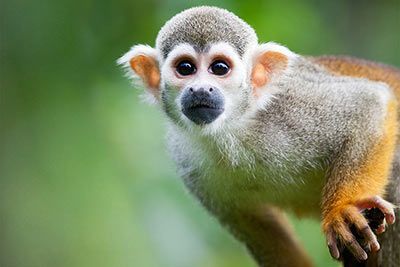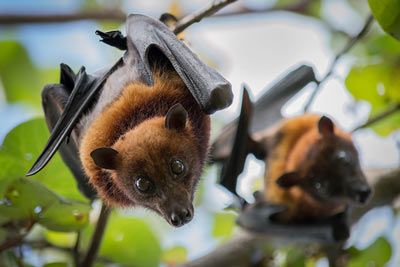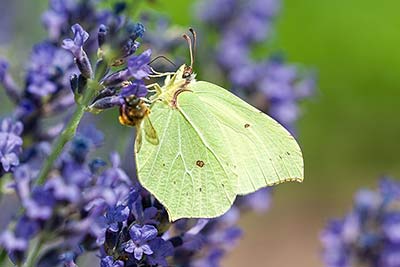Bonobo
Bonobo Facts
| Size | 27-32 inches (70-83 cm) |
| Speed | Up to 25 mph (40 km/h) |
| Weight | 68-132 pounds (31-60 kg) |
| Lifespan | 40-50 years (in captivity) |
| Food | Fruits |
| Predators | Snakes, Leopards, Crocodiles |
| Habitat | Africa (Kongo) |
| Order | Primates |
| Family | Hominids |
| Scientific name | Pan paniscus |
| Characteristics | Great ape with a very peaceful nature |
Main Characteristics
The bonobo is a chimpanzee species that lives in Central Africa. Its unique characteristics are a dark face and pink lips. It is very intelligent and sociable. Unlike the common chimpanzees the bonobos have a peaceful nature and are led by female members of their group.

Species
There are two species of chimpanzee: the common chimpanzee and the bonobo. It's interesting to note that both of these animals share over 98% of the same DNA as humans. However, when it comes to anatomy, the bonobos are actually more similar to us than the common chimpanzees.
Distribution and Habitat
Bonobos live in the rainforests south of the Congo River in Central Africa.
Life Style
Bonobos are diurnal, meaning they are active during the day. They're incredibly social animals, forming groups consisting of 40 to 120 individuals. These friendly primates engage in grooming sessions, taking care of each other's fur, and they also have a generous habit of sharing food among themselves.
Anatomy and Appearance
Size and Weight
Male bonobos can grow up to 27-32 inches (70-83 cm) in length, while females are slightly smaller, reaching only 29 inches (76 cm). However, when it comes to weight, the difference is more significant. Males weigh between 81-134 pounds (37-61 kg), whereas females weigh only 59-83 pounds (27-38 kg).
Appearance
The bonobo stands out with unique characteristics such as a dark face, pink lips, a distinct middle parting on their head, and long legs. Their fur ranges from a deep shade of brown to black.

Bonobo or Chimpanzee – What’s the Difference?
Here are the main differences between bonobo and chimpanzee:
• Anatomy
Bonobos have a more slender build compared to the sturdy body of the chimpanzees. They have longer legs but smaller heads and smaller ears. On their heads their long hair forms a parting and there is a bald spot in the shape of a triangle. In chimpanzees, hair grows to the base of the forehead. The face of the bonobos is often darker in color, which means that the light lips are clearly visible.
• Behavior
Bonobos live in groups led by females. Among common chimpanzees, males are at the top of the hierarchy. Bonobos are also more peaceful and playful.
• Locomotion
Bonobos tend to move on two legs more often than chimpanzees do.
• Diet
Bonobos primarily eat fruits and plants. Chimpanzees also eat small animals.
• Habitat
Bonobos live exclusively in the rainforest, while chimpanzees also live in the savannah.
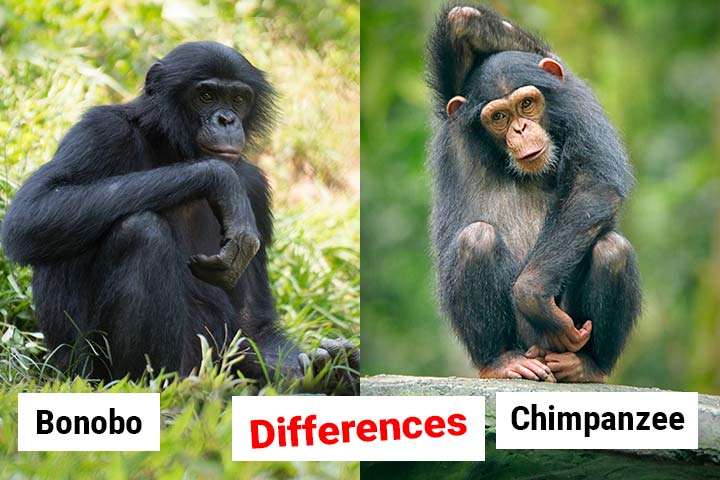
Diet
A bonobos' diet consists of around 60% figs, berries and custard apples (a tropical fruit). It also eats plants, seeds, honey and eggs.
Behavior
Communication
Bonobos communicate through sounds, facial expressions and body postures.
Even the Adults Play
Bonobos are very silly and playful - not just during their childhood. Even the adults participate in playing. It is an important part of their lives. It also cultivates peace and solidarity in the group.
The Role of the Females
In the animal kingdom, it is common for male animals to rule over groups. However, this is different in bonobos. The older females hold the power and influence the group dynamics. They are the decision-makers, determining where the group will go next or when it's time to rest. Even when it comes to eating, there are specific rules. The females always eat first, while the males patiently have to wait until the females are finished.
The Role of the Males
The males have the responsibility of protecting the group and assisting in the search for food. Their position in the group is not determined by fighting with other males, but rather by their mother's status. If a female animal is highly respected, her male offspring will automatically have a higher rank in the group.

Intelligence
Bonobos are very intelligent. Here are three examples:
• They Use Tools
Bonobos make rain hats out of leaves, toothpicks out of twigs and sponges out of moss to suck fresh water out of tree trunks. They are one of the few animals that use tools.
• They Make Medicine
When they are sick, bonobos help themselves by eating certain plants. For instance, if they have parasites, they eat a spurge plant called Manniophyton fulvum, which helps them eliminate the parasites.
• They Have a Highly Developed “Language”
Bonobos, just like humans, have the ability to assign two different meanings to a single sound, depending on the context. It's similar to how we use language. For instance, a bark can refer to the sound a dog makes, but it can also describe the outer layer of a tree. It takes a lot of brains distinguishing between similar-sounding calls.

Importance for the Ecosystem
These primates are the second largest animals in the area that mainly feed on fruits. Over the course of their lifetime, they can consume up to 12 million seeds from more than 90 different plant species, including 40% of all tree species. By dispersing these seeds through their droppings, they help to maintain the biodiversity of the ecosystem within a 2.7 mile (4.5 km) radius.
Life Expectancy
How old bonobos live in the wild is still unknown. In captivity they live up to 50 years.
Enemies and Threats
Natural Enemies
The bonobos' natural enemies are pythons and leopards.
Human Impact
The biggest threats to bonobos are hunting and habitat loss, particularly through deforestation, agriculture, livestock farming and the construction of villages.
Conservation Status and Population
Bonobos are considered an endangered species. The number of animals living in the wild is difficult to estimate. According to a 2016 IUCN report, there are 15,000-20,000 animals left.
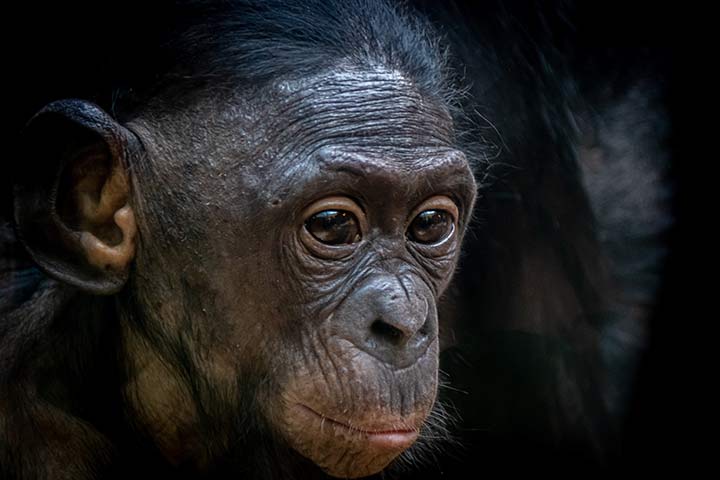
Reproduction
Partnership
Similar to chimpanzees, gorillas, and orangutans, bonobos aren't monogamous.
Gestation Period and Rearing the Young
Bonobos give birth to their offspring every four to five years. The gestation lasts for about 230 to 240 days. Once born, the young ones are nursed for five to six years. The male offspring usually stay with their mother for their entire lives. The female bonobos leave the group and establish their own.
Can Bonobos and Chimpanzees Interbreed?
The genetic makeup of bonobos and chimpanzees is so similar that they can produce healthy, reproductive offspring. In reality, this doesn't happen because the animals are separated by the Congo River. In 1991, captive animals mated and had three bonopanzees... or chimponobos (?). There is still no official name for the cross between the two species.
Evolution and Discovery
Chimpanzees and bonobos share common ancestors. When the Congo River divided their habitat 1.5 to 2 million years ago, they evolved separately. The bonobo got its name due to a typo. When they arrived in Europe in the 1920s, the crates had the word "Bolobo" written on them. This is the name of the town near the Congo River where the first animals were discovered.
Fun Facts
Female Leaders in the Animal Kingdom
Female animals being the "bosses" is a rarity in the animal kingdom. Apart from bonobos, this phenomenon can also be observed in hyenas, elephants, orcas, lemurs, mongooses, ants, meerkats, lions, naked mole rats, and bees.
The Bonobo Is Related To:
Animals in the Same Biome:
Related Articles:
- Main Characteristics of Primates
- Ape or Monkey - What's the Difference?
- Animal Intelligence
- Animals That Recognize Their Reflections
















